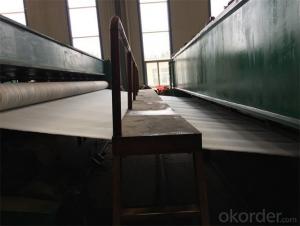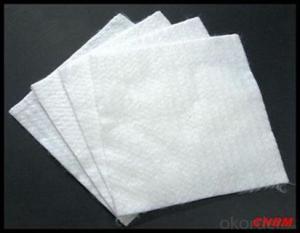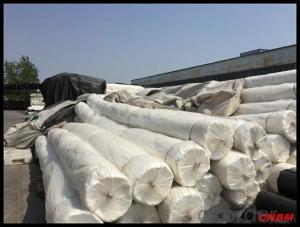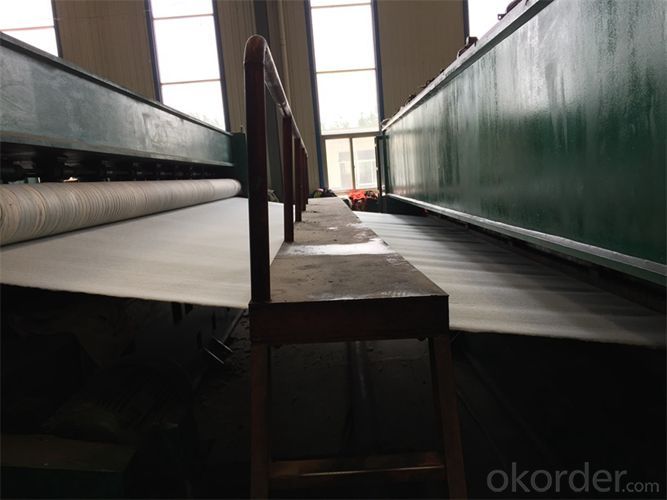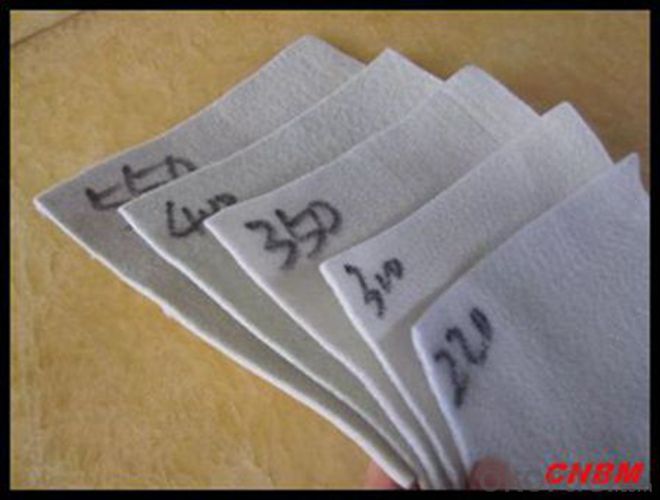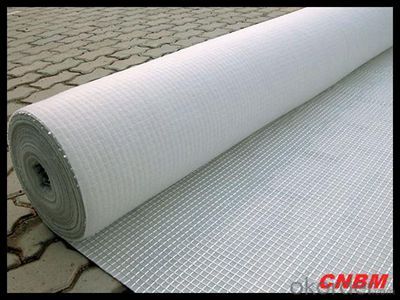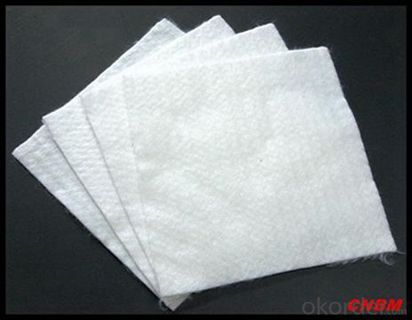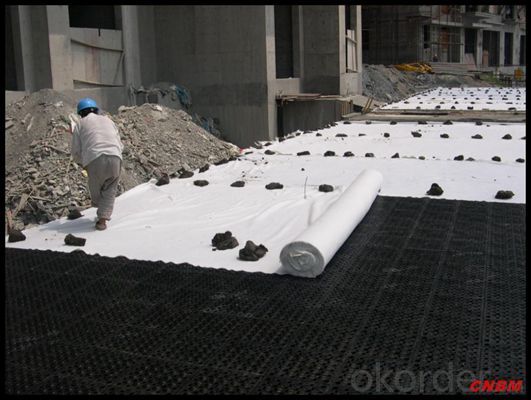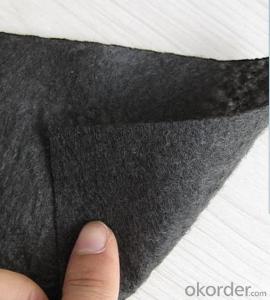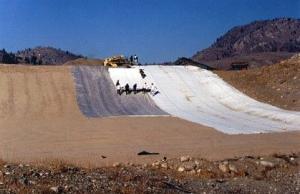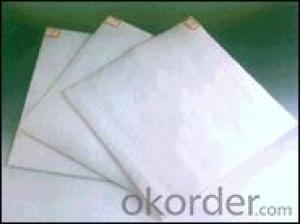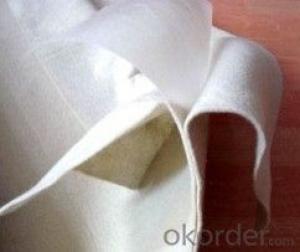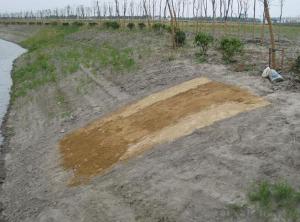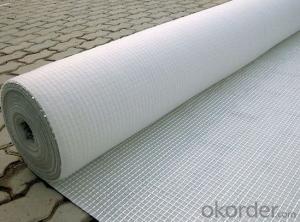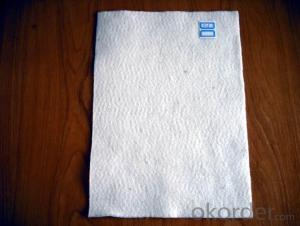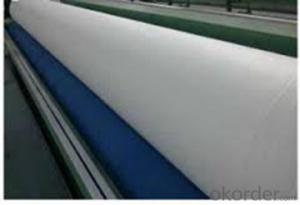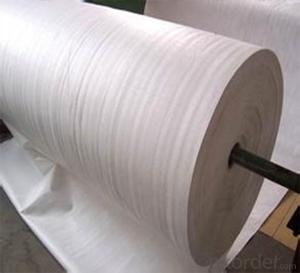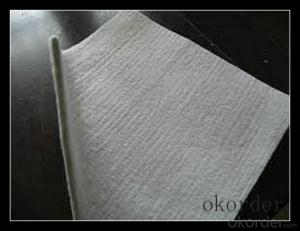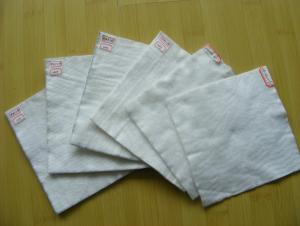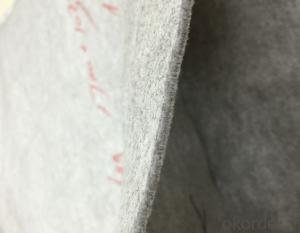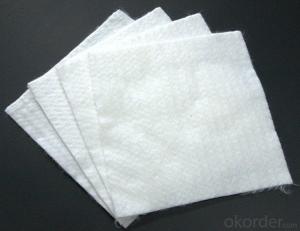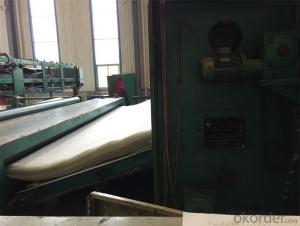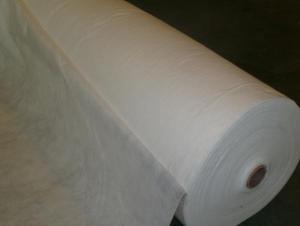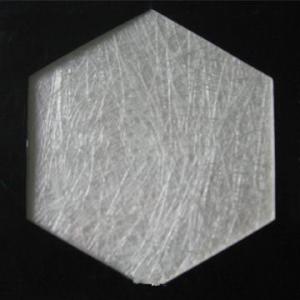100% Polyester Filament Non-Woven Polypropylene Geotextile Fabric
- Loading Port:
- China main port
- Payment Terms:
- TT OR LC
- Min Order Qty:
- 2000 m²
- Supply Capability:
- 1000000 m²/month
OKorder Service Pledge
OKorder Financial Service
You Might Also Like
Specification
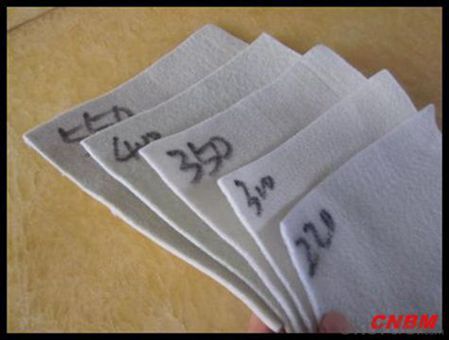
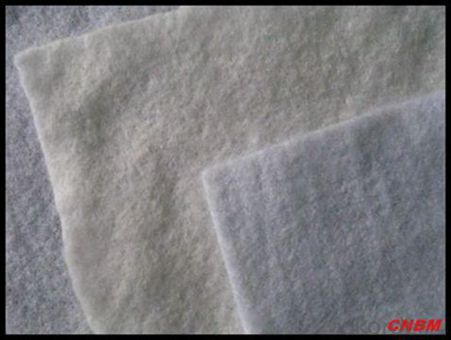
Product Features
Can self-seal small cracks while forming watertight laps at the seams.
Provides a strong mechanical bond to poured concrete.
Proven effective in structures under continuous or intermittent hydrostatic pressure-up to 70m (231 ft).
Can be installed in virtually any weather condition, including freezing temperatures and damp conditions. Can be installed on green concrete without primers or adhesives.
Proven effective in both vertical and horizontal applications-i.e., backfilled and property-line walls.
Application
While the nonwoven fabric can be used in almost any stabilization,separation or cushioning application,they are most commonly used in areas that also require filatration.The non woven design of the material provides a higher rate of flow through,making it easier for water to pass through the material.Some commen uses of the material includes the following:
Road stabilization applications
Roofs
Civil applications
Railway work
Landfill lining
Trenches
Dams
Fitration under rip rap and rocks
Environmental applications
Packaging & Shipping
Packing: PLASTIC FILM INSIDE, AND WOVEN BAG OUTSIDE
Shipping: About 15 days after receipt the deposit
geotextile fabric
permeability,filtration,easy for construction
ISO and CE certificate
Good quality and competitive price
Our Service
Quality assurance
1.On a regular basis or as per your request,we entrust national testing agencies to conduct quality inspections
2. Strictly in accordance with the ISO9001-2008 international quality system standard,we monitor and manage the whole process throughout production,quality testing,and measurement to ensure product quality
3. For quality-related construction delay or substandard construction(except for damage or losses due to customer’s responsibility or irresistible natural disasters),we have refunding,replacement,and repair services.We will respond to customers’ feedbacks on quality issues within 24 hours.
FAQ:
Q: What kind of payments does jenor support?
A: T/T, L/C, Cash are accepted.
Q: Do you charge for the samples?
A: Accordeing to our company policy, the samples are free, we only charge the freight fee. And we will return the freight fee during the next order.
Q: Can you produce according to customers' design?
A: Sure, we are professional manufacturer, OEM and ODM are both welcome.
Q: Do you have other products?
A: Yes, please check the pictures:
- Q: Can geotextiles be used in groundwater control?
- Yes, geotextiles can be used in groundwater control. Geotextiles can be employed as a filter to prevent fine particles from clogging drainage systems, as a separator to keep different soil layers distinct, or as a reinforcement to improve the stability of soil structures. In groundwater control, geotextiles are commonly used in applications such as drainage systems, erosion control, and retaining walls to effectively manage and control the movement of groundwater.
- Q: 400g / m2 two cloth a layer of water permeable geotextile technical requirements
- Two cloth a film will not be permeable, the composite film index breaking strength 5kn top broken 1.1kn tear 0.15kn peel 6n / cm or substrate fracture without stripping, the current 2008 standard weight has not been required, the original standard For not less than 360 grams
- Q: Water stability grassroots health permeable geotextile or plastic film is good?
- 1, geotextile cloth, high unit price. 2, plastic film poor maintenance, generally do not. 3, moisturizing cotton, grass mountain child with more.
- Q: Can geotextiles be used in coastal erosion control?
- Yes, geotextiles can be used in coastal erosion control. Geotextiles are permeable fabrics that can be placed in coastal areas to stabilize soil and prevent erosion caused by waves and currents. They help to retain sediment and protect shorelines from erosion by absorbing and dissipating wave energy. Additionally, geotextiles can promote the growth of vegetation, further enhancing their effectiveness in coastal erosion control.
- Q: Can geotextiles be used in water retention projects?
- Yes, geotextiles can be used in water retention projects. Geotextiles are often employed as an effective solution for erosion control, filtration, and separation of materials in water-related construction projects. They can help retain water by preventing soil erosion and enhancing water infiltration, making them a valuable component in water retention projects.
- Q: What are the factors to consider when selecting geotextiles for embankment stabilization?
- When selecting geotextiles for embankment stabilization, several factors need to be considered. These include the type and strength of the geotextile, its permeability and filtration properties, the soil conditions, the slope angle of the embankment, and the expected loads and stresses on the structure. Additionally, factors such as installation and maintenance requirements, cost-effectiveness, and the environmental impact of the geotextile should also be taken into account. Overall, a comprehensive assessment of these factors is essential to ensure the optimal selection of geotextiles for embankment stabilization.
- Q: Can geotextiles be used in bridge abutment reinforcement?
- Yes, geotextiles can be used in bridge abutment reinforcement. Geotextiles are commonly employed in civil engineering projects, including bridge construction, to improve soil stability and provide erosion control. When used in bridge abutment reinforcement, geotextiles can help distribute loads, prevent soil erosion, and increase the overall stability and longevity of the structure.
- Q: Can geotextiles be used in agricultural drainage systems?
- Yes, geotextiles can be used in agricultural drainage systems. Geotextiles are often used as a filter material to prevent soil particles from clogging drainage pipes while allowing water to pass through. They help to improve the efficiency and longevity of agricultural drainage systems by reducing soil erosion and increasing water flow.
- Q: What are the geotextiles?
- Geotextile manufacturers should use geomembrane it
- Q: Can geotextiles be used for filtration purposes?
- Yes, geotextiles can be used for filtration purposes. They are designed to allow water or other liquids to pass through while retaining soil or other particles, making them effective for various filtration applications in areas such as agriculture, construction, and environmental engineering.
Send your message to us
100% Polyester Filament Non-Woven Polypropylene Geotextile Fabric
- Loading Port:
- China main port
- Payment Terms:
- TT OR LC
- Min Order Qty:
- 2000 m²
- Supply Capability:
- 1000000 m²/month
OKorder Service Pledge
OKorder Financial Service
Similar products
Hot products
Hot Searches
Related keywords
